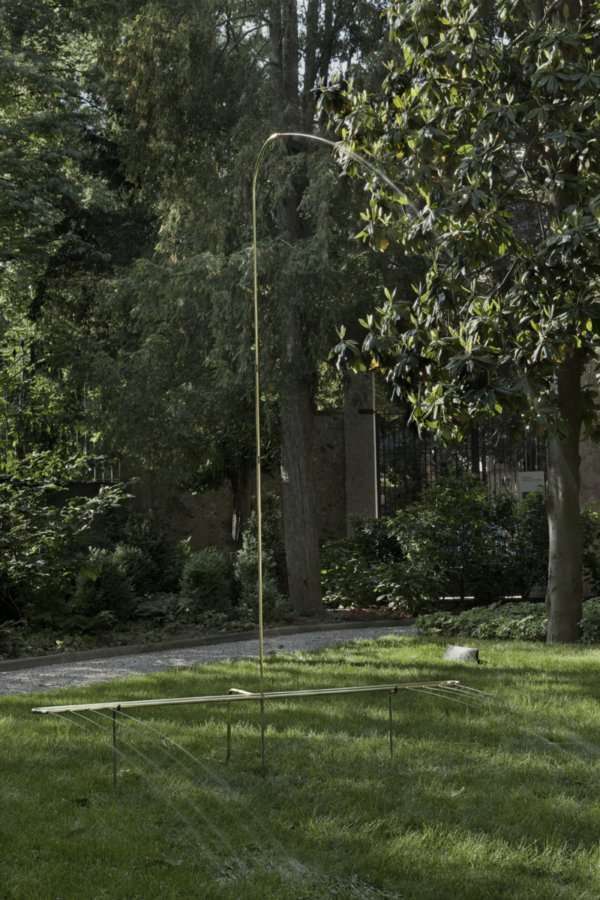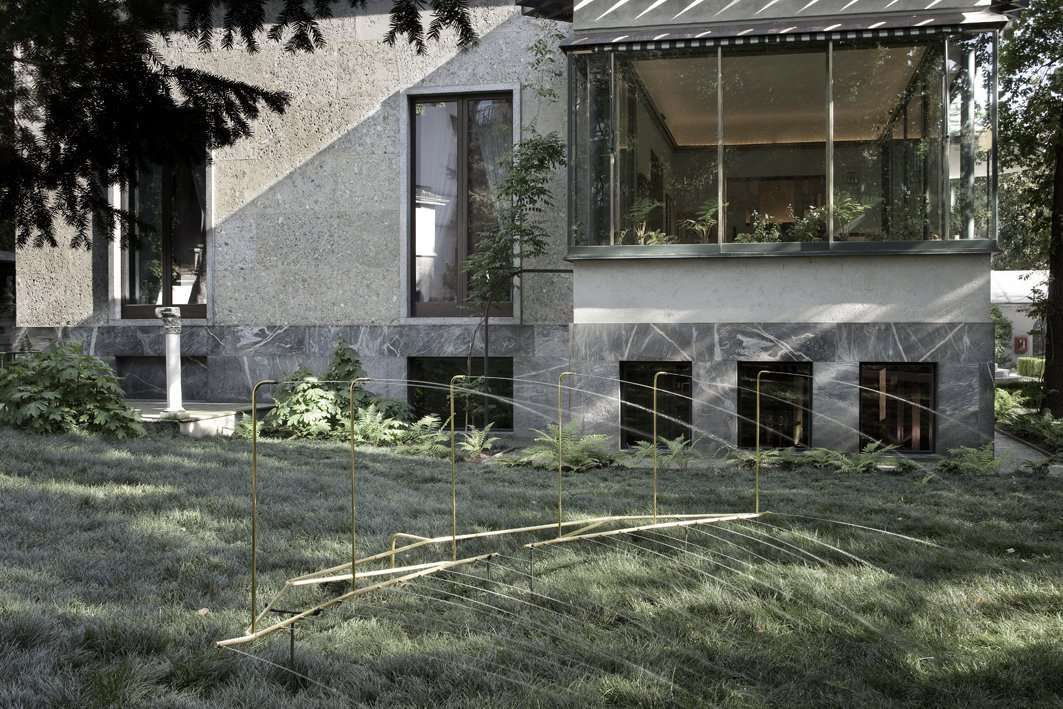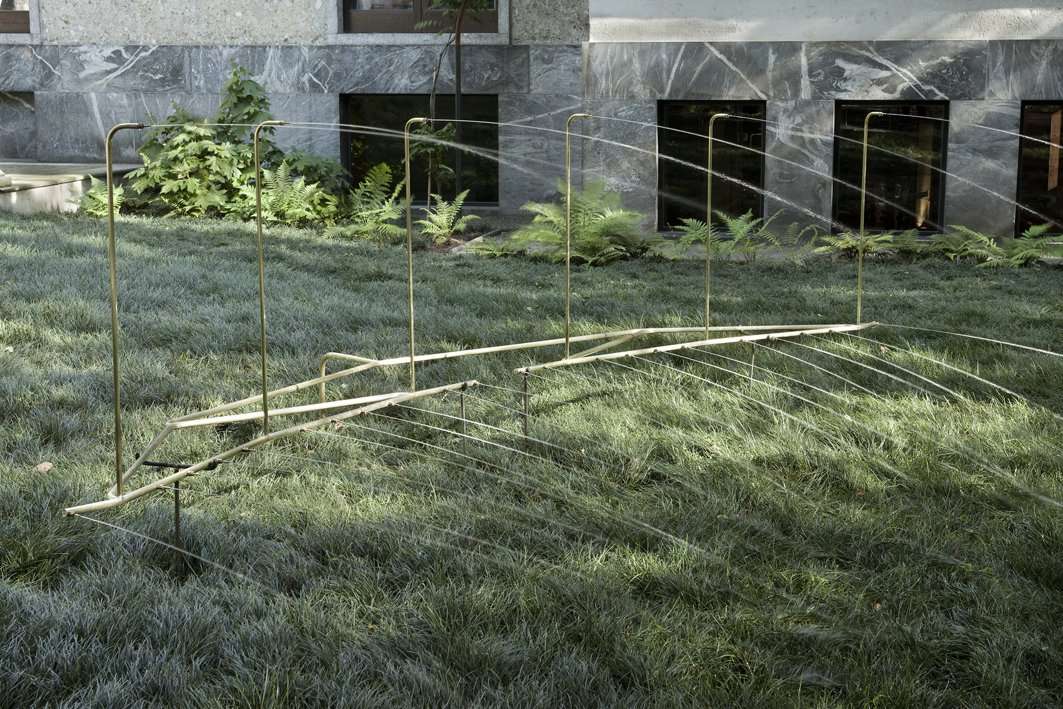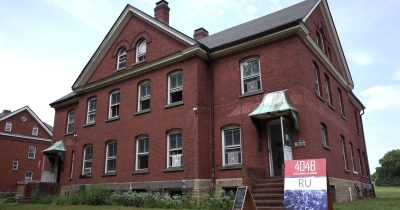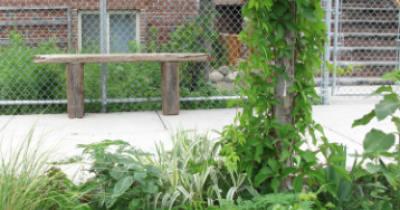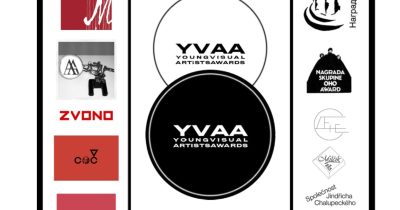LOW DÉCO
Meris Angioletti
Riccardo Beretta
Patrizio Di Massimo
Matteo Rubbi
Santo Tolone
curated by Alessandro Rabottini
Villa Necchi Campiglio, Milan
Via Mozart, 14
From 18 May to 13 June, 2010
http://www.fondoambiente.it/eventi/gemine-muse-2010.asp
Being staged as part of Gemine Muse 2010, the Low Déco exhibition brings together five emerging artists, who are either active in Milan or who were trained in this city. They have been invited to produce works that have been specifically designed for the context of Villa Necchi Campiglio, encapsulating what the building represents in terms of the history of architecture and design and its value as a historical document in the widest possible sense.
The Villa was commissioned by the Necchi Campiglio siblings and was designed by Piero Portaluppi (1888-1967), who completed work on it in 1935. Portaluppi used the Villa to experiment with a synthesis of Déco and Rationalism the like of which had never been seen before. During the Second World War, use of the Villa as a private residence was put on hold and it was used instead as a military garrison. Once it had been returned to the owners, they decided to entrust architect Tommaso Buzzi (1900-1981) with the task of making the space more attuned to the prevailing taste of the Milanese upper middle class.
It is from these events – i.e. from the dialectic that engages with modernity, tradition, history and power – that the exhibition takes its cue: indeed, all of the works were created out of a profound relationship with the history of the Villa, and they embody different approaches to themes such as the nature of historical knowledge, the relationship between the past and the present, the relationship between the original and the copy, and the guises that modernity has assumed during Italy’s artistic and political history. In these works, the past returns in various forms: as a fossil, as a misinterpreted object, as a ghost haunting the present and as a possibility and hope for the future.
The exhibition catalogue, published by Kaleidoscope Press with text by Lucia Borromeo, Michele D’Aurizio and Alessandro Rabottini, documents the research that each artist carried out in preparation for this exhibition and that constitutes the basis for each work on show.
Gemine Muse 2010 involves 22 Italian towns and cities, 120 artists, 30 curators, 19 exhibition venues and 3 trails in 3 historical centres, and forms part of the ITALIA CREATIVA project, run by the Department for Youth / President of the Council of Ministers, in partnership with ANCI (the National Association of Italian Municipalities) and GAI (the Association for the Circuit of Young Italian Artists).
MERIS ANGIOLETTI
Conversation Pieces, 2010
2-ch audio installation with audioguide headphones
Meris Angioletti’s work consists of a sound-based installation to be experienced through headphones (on entering the Villa, visitors should request the audioguides). The title Conversation Pieces recalls a genre of painting that was in vogue in the 18th century, especially in Britain, in which family groups were portrayed in different poses and contexts. The title also refers to the penultimate film of Luchino Visconti, made in 1974 and called Conversation Pieces in English, which configures the luxurious home of the elderly protagonist as the backdrop for his withdrawal from the present. Angioletti invites visitors to take an auditory walk in the garden, immersing them in a tale told by multiple voices, which makes the Villa and its grounds the mental sets for an imaginary film. This mosaic of literary, film and historical sources transforms the visitor into a virtual camera, whose only form of recording is its inscription in the personal experience of the individual.
RICCARDO BERETTA
Portoro, 2010
Manual wooden inlay on marine plywood
Riccardo Beretta’s wooden inlaid sculpture looks at first like a marble surface leaning against a tree – a minimal shape that puts natural and manmade elements into a dialogue with each other, recalling the dialectic of naturalistic decoration, geometry and precious materials that distinguishes Portaluppi’s work. Out of the many references that this work evokes – from the simulation of Italian Baroque to Richard Artschwager, from Art Nouveau to John McCracken – there emerges the theme of the relationship between artistic forms, ideology and politics. The woods that compose the inlay are sourced from different countries, from Canada all the way to Brazil, whereas the marble that, together, they resemble, is characteristically Italian, as if to question the idea of purity and integrity, both of the materials and of the national identity. This work proposes a form of hybridisation that cites the defence of unity and homogeneity as the origin of the totalitarianisms of the past and of contemporary xenophobic policies.
PATRIZIO DI MASSIMO
Fuga dal disordine, 2010
Guided tour of the Villa, actor: Alberto Onifretti, courtesy of the artist and t293, Naples
Patrizio Di Massimo uses the device of the guided tour – the only device available to the visitor to access the Villa – and, through the presence of an actor, leads visitors on a trip whose stages are constituted by some of the works of the Novecento italiano movement donated by Claudia Gian Ferrari to the Italian National Trust (FAI). In his work, the aesthetic ideals of the “Return to Order” are overlaid on the biographical details of figures such as Margherita Sarfatti and Italo Balbo, who were linked to Fascism and to its initial perception as a political avant-garde, which soon turned into a totalitarian regime. In Di Massimo’s work, the classicism of the forms of the “Return to Order” and the link with the tradition of Italian art and the ideal of a pure art become the mirror of a degeneration of the concepts of tradition and unity of national culture.
MATTEO RUBBI
L’Italia in cerchio, 2010
Prototype of a board game inspired by the 22nd Giro d’Italia, 18 boards, various materials
Matteo Rubbi’s work arises out of a collaboration with seventeen artist and writer friends. Each of these friends was asked to come up with a parlour game inspired by one of the legs of the 22nd Giro d’Italia, which was held in June 1934 and was won by Learco Guerra, on the eve of the Italo-Abyssinian War. Each element is the hypothesis of a game, a prototype whose rules are yet to be defined. Visitors are invited to play these games and to find out, through sharing and participation, what the rules of each of them are. For the Necchi Campiglio family, games provided an important opportunity for socialising, as evinced by the gaming tables designed by Portaluppi for the library: Rubbi references this habit of the owners and reflects on the concept of the “rule” as a space for negotiation and invention, rather than as a tool through which to achieve victory.
SANTO TOLONE
Fontana Angelica
2010
Brass tube, electric timer 340 x 240 x 90 cm
Photo: Jacopo Menzani
Fontana Angelica
2010
Brass tube, electric timer 130 x 419 x 85 cm
Photo: Jacopo Menzani
Fontana Angelica
2010
Brass tube, electric timer 130 x 419 x 85 cm
Photo: Jacopo Menzani
Santo Tolone evokes the memory of Portaluppi in works created through research carried out at the Piero Portaluppi Foundation Archive. The shadow that a step of the entrance to the Villa casts on the step below has been taken by the artist and reproduced in marble – a material of which Portaluppi was very fond – and then moved to a given point in the garden. The artist takes his inspiration from the recurrent use that the architect made of sundials on the facades of his buildings; as seen, for example, on the southern wall of Villa Necchi. In another work by Tolone, Portaluppi reappears as the designer of fountains: the artist has created sculptures out of brass pipes, taking as his template the internal hydraulic structure of fountains that Portaluppi had designed, but never realised, in a gesture that recalls the ghosts of the architecture of English artist Rachel Whiteread and the evocation of the habitational void by Alberto Garutti. These functional skeletons are homages to a never-fulfilled desire that, with the addition of sporadic water jets, now comes to life.

